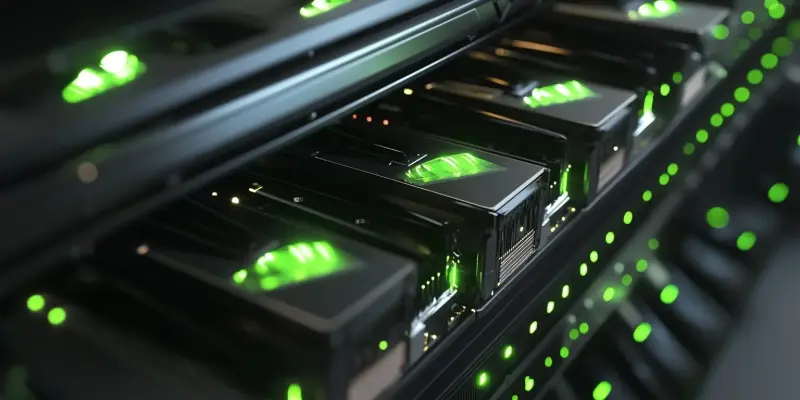In an era where data is exponentially growing, efficiently processing large datasets has become a pivotal challenge for data scientists. Traditional CPU-based methods are often constrained by the linearity of their processing power, leading to longer computation times and limited scalability. Enter RAPIDS cuDF, a GPU DataFrame library designed to revolutionize data science workflows by offering a pandas-like API that leverages GPU acceleration for tasks such as loading, joining, aggregating, and filtering data. By harnessing the immense parallel processing capabilities of GPUs, cuDF significantly boosts data processing and analysis performance, enabling data scientists to handle large datasets with increased speed and efficiency.
Key Developments in RAPIDS cuDF
One of the recent key developments in the RAPIDS ecosystem is the RAPIDS 24.12 release, which brought several important updates that enhance cuDF’s capabilities. This latest version includes CUDA 12 builds available on PyPI, simplifying the installation process and integration into Python environments. This update makes it considerably easier for data scientists to incorporate the power of GPU processing into their existing workflows without undergoing a steep learning curve. Notably, the performance improvements in this release include faster groupby aggregations and more efficient file reading directly from AWS S3, making it more versatile and robust for various data processing needs.
In addition to these improvements, the release also introduced significant advancements in memory management for larger-than-GPU memory queries through CUDA Unified Memory support provided by the Polars GPU engine powered by cuDF. This feature allows data scientists to manage extensive datasets more effectively without being constrained by the physical memory limitations of the GPU. Enhanced capabilities in training graph neural networks (GNNs) have also been incorporated, facilitating faster and more efficient processing of real-world graphs, thereby expanding cuDF’s applicability in the machine learning domain. These advancements are pivotal for enabling data scientists to push the boundaries of what is possible with their datasets, providing more insightful and timely results.
Seamless Integration and Benefits of GPU Acceleration
One of the standout features of cuDF is its seamless integration with existing data science tools, which provides a familiar interface for users transitioning from CPU-based workflows. This integration significantly reduces the learning curve and enables data scientists to quickly take advantage of GPU acceleration. Furthermore, cuDF’s interoperability with other RAPIDS libraries allows for the creation of comprehensive, GPU-accelerated data science pipelines. This interconnected ecosystem amplifies the benefits of using GPUs, offering increased throughput due to parallel processing and greater scalability for handling large datasets.
The advantages of GPU acceleration extend beyond just speed and efficiency. By reducing the time required for data processing tasks, cuDF also enhances cost efficiency by lowering the need for extensive computational resources. This reduction can lead to significant savings in both time and financial expenditure, making data science projects more sustainable and accessible. With cuDF, data scientists can accomplish their tasks quicker, allowing for a higher frequency of iterations and enabling deeper exploration of their data. This capability is crucial for driving innovation and maintaining a competitive edge in data science and analytics.
Utilizing RAPIDS cuDF for Enhanced Data Pipelines
In today’s world, where data is growing at an exponential rate, the challenge of processing extensive datasets efficiently has become paramount for data scientists. Traditional CPU-based techniques often fall short because of their limited processing power, resulting in longer computation times and poor scalability. This is where RAPIDS cuDF steps in—a GPU DataFrame library created to transform data science workflows. It offers a pandas-like API that utilizes GPU acceleration for essential tasks like loading, joining, aggregating, and filtering data. By taking advantage of the parallel processing strengths of GPUs, cuDF dramatically enhances data processing and analysis speeds. This improvement means data scientists can manage significantly larger datasets with much greater speed and efficiency than ever before. Consequently, the shift to utilizing GPU-accelerated tools like cuDF is becoming increasingly critical for those looking to remain competitive in the ever-expanding field of data science.

